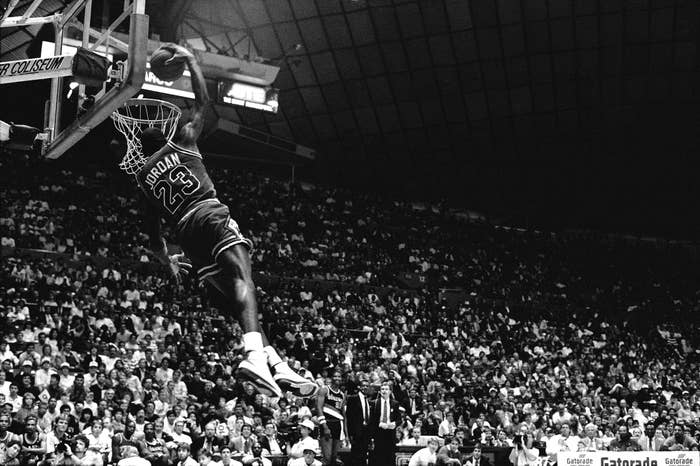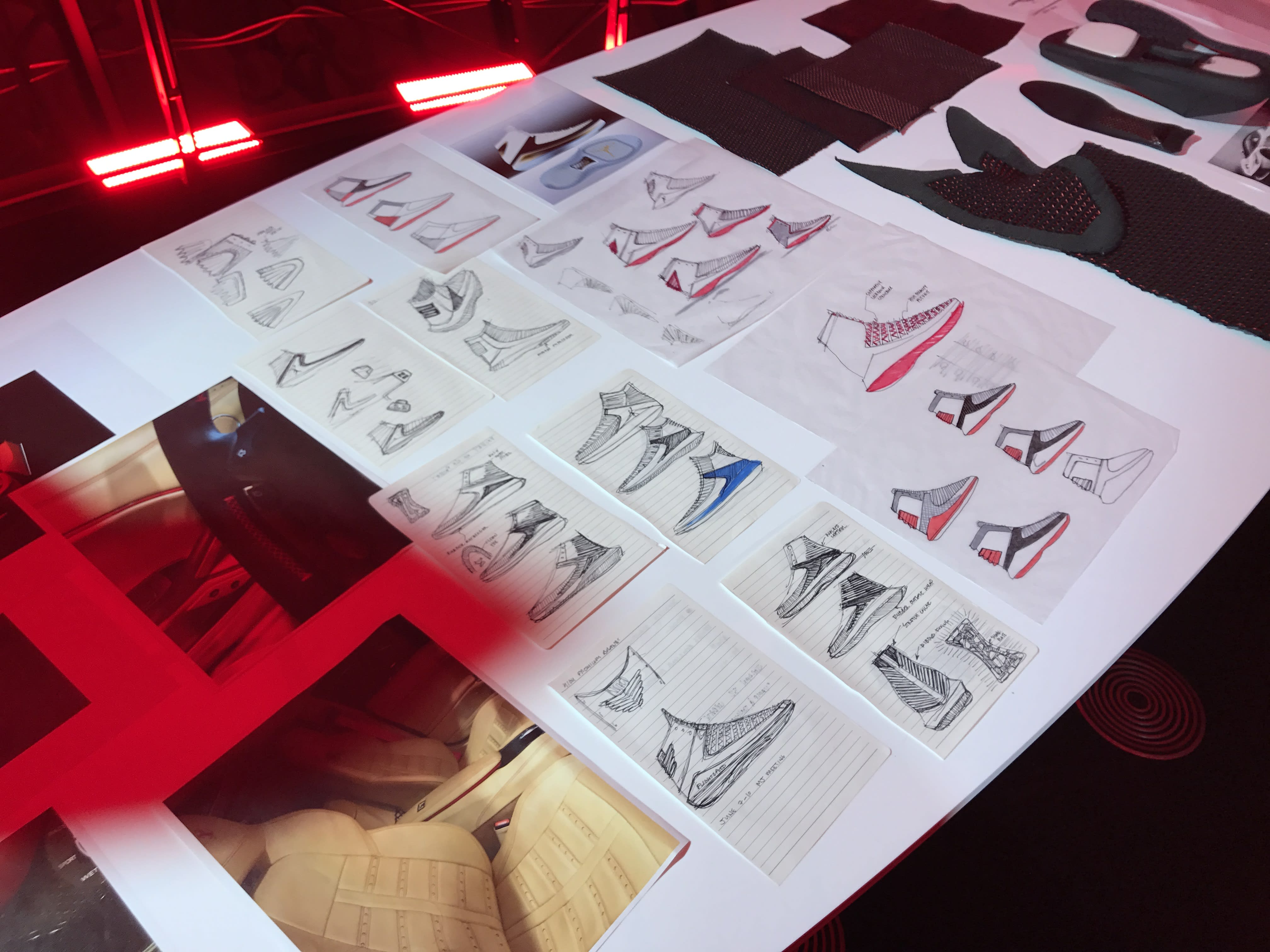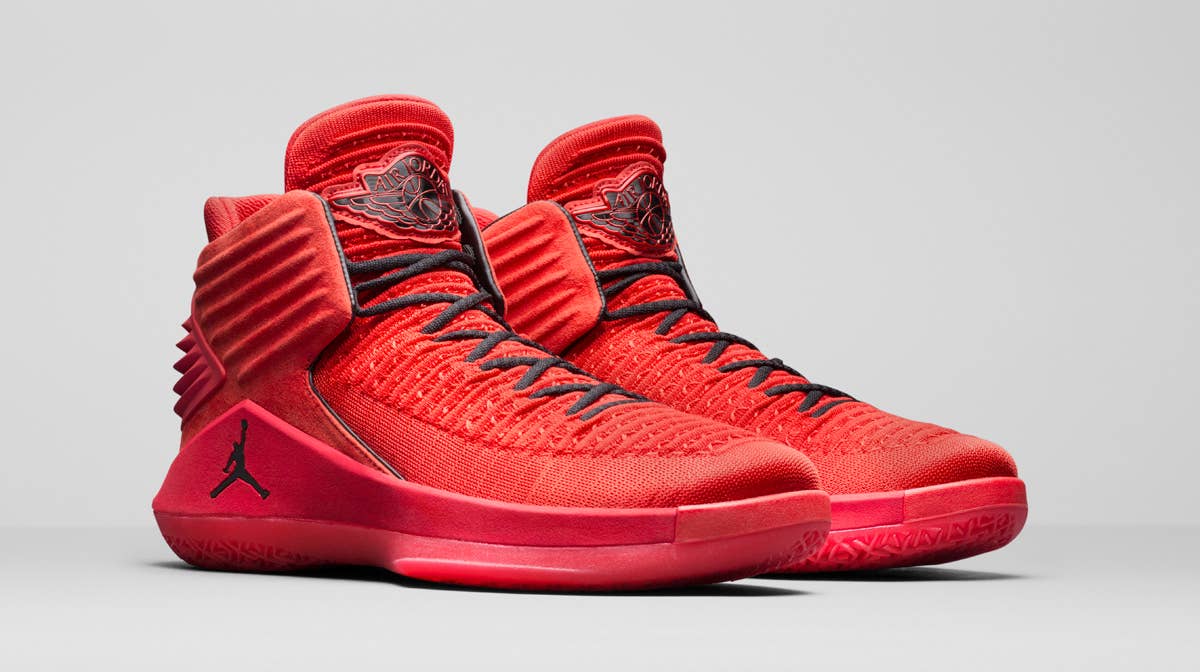
Fourteen years after Michael Jordan played his final NBA game, the reveal of a new Air Jordan silhouette remains an event. It’s not the same as it used to be, of course—there hasn’t been a new Spike & Mike commercial in a long time, and there’s no guarantee we’ll ever see Jordan himself don the shoe. But in a sneaker world that’s become increasingly fragmented and leak-prone, the annual unveiling of the new Air Jordan remains a constant, something that manages to pique the interest of even the most jaded sneakerhead. For a while, at least.
It’s hard to say what stage we’re at in the lifespan of Air Jordan—the 1 and II mostly stood on their own, then there was the long reign of Tinker Hatfield, from III to XV, then Jordan’s multiple returns and retirements. The most recent model, the XXX1, continued what started with the XX8—the evolving Flightplate propulsion system—and continued with the XX9 and XXX with their woven uppers. But the XXX1 also brought a new element of Jordan design to the table, revisiting the 1 after 30 years and, for the first time, employing both the Swoosh and the Jumpman on a flagship Air Jordan.
The first indication that the next Air Jordan would follow this same format was the invitation to Italy in late August, where the XXX2 would be officially unveiled. The II was manufactured there—it’s still the only Air Jordan to ever be produced in Italy—and its clean, Swoosh-less upper established an aesthetic that still drives Air Jordan design today. We got a look at the XXX2 before the trip and, sure enough (as by now everyone has seen) it re-imagined the II in Flyknit and elegant leather. The Swoosh is gone, as it was on the II, but the ball and Wings logo is given more prominent placement on the tongues.

(Not to jump ahead too far, but this puts Jordan in an interesting spot when it comes to the XXX3. If they want to keep some element of surprise, they probably shouldn’t base it on the III—but the III remains one of the best-loved, if not THE best-loved Jordan in history. It seems crazy that they would base a new Air Jordan on the II, which hardly anyone liked, and not base one on the III, which everyone did. But that’s next year.)
The XXX2, like the XXX1, was designed by Tate Kuerbis, Jordan design director and the man behind the Jordan XVIII and XIX. He took inspiration from Jordan’s ever-changing stable of Ferraris—although he passed on driving one when Jordan tossed him the keys to his multi-million dollar La Ferrari—as well as the II. The XXX2 is not only the first Flyknit-based Air Jordan, but the first Flyknit shoe Kuerbis had ever done, requiring constant communication with a team of programmers in Asia. While the II’s sleek upper used layers of different leather, the XXX2’s equally clean forefoot is produced as one piece of material. The laces sink into the ribbed upper, becoming all but invisible in the black colorway.
Along with the nod to the II, the Ferrari inspiration (something that has inspired Air Jordan designs since the XIV) was reason enough to travel to Turin, once home to a giant Fiat factory, now converted to a hotel and mall. We stayed in the hotel and played hoops on the roof, directly under a helipad and geodesic globe of an office, lit up in red for the occasion. The court itself was laid down on a test track with a steep banked curve that we traversed in a fleet of new Maseratis and Alfa Romeos, enjoying yet another aspect of Italian engineering.

The Air Jordan XXX2 wasn’t actually produced in Italy like its 1987 forebear, in part because the Flyknit-equipped factories are located elsewhere. Price was also undoubtedly a concern—while the Air Jordan II’s $100 price tag would be closer to $215 in 2017 dollars, a performance basketball shoe manufactured in Italy now could easily run twice that. Not that the shoe’s Asian manufacture detracts from the design. Fit and finish looked flawless on the pairs I saw, from the exposed carbon on the sole to the hidden stitching on the two-tone leather ankle area. The lowcut, set to release at the same time as the mids, provides players and casual wearers alike with another option. And the Rosso Corsa edition, done up in all red, pays tribute to its Italian inspiration.
While otherworldly performance is still the main objective, Jordan (the brand, not the man) has come to realize that how a shoe looks off-court is more of a concern to most than how it looks on-court. This didn’t require as much thought when shoes were bulkier and primarily made from leather or nubuck, but newer, lighter-weight materials have required some outside-the-box thinking. The weave-to-leather blend on the XXX1 was one approach, and the use of leather and suede on the upper of the XXX2 is another. A simple knit sock with a high-tech sole unit may be the lightest approach to performance basketball, but an Air Jordan needs to be so much more than that.
The current Air Jordan, as established by the XXX1 and now continued in the XXX2, has to pay homage to the past while staying fully in the present, it needs to make a statement off the court while performing at the highest level on it. Time will tell whether the XXX2 is able to do all of this well enough to enter the pantheon of the most heralded Air Jordan models. It seems almost unfair to judge a shoe like the XXX2 against its earliest predecessors, including its 1987 inspiration—after all, it’s expected to do so much more. Much has changed. But an Air Jordan unveiling remains an event. No matter where it’s held.

